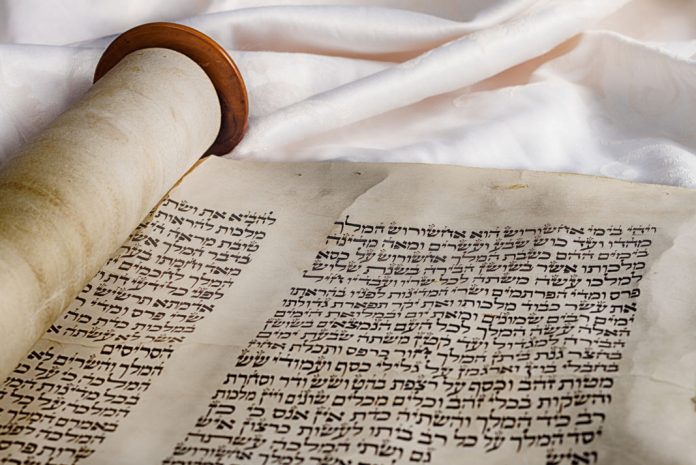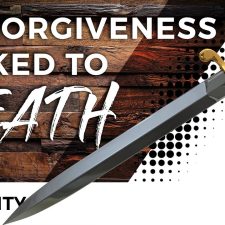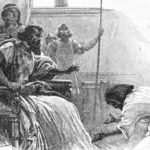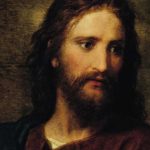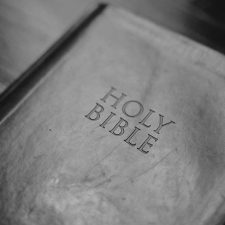My readings of the Pentateuch have given me a deeper insight and understanding of its overall significance to the canon of Scripture. In this article, I will share my thoughts about the following:
- What I believe to be the central motif of the Pentateuch,
- How the balance of the motif was carried out in the Old Testament,
- How the motif was fulfilled in the New Testament and
- How the motif is germane to the modern church.
I believe the central motif of Pentateuch was the work of redemption. While Adam and Eve resided in the earthly sanctuary called the Garden of Eden, YHWH would commune with Adam and Eve in the cool of the day (Gen. 3:8). Then Eve was deceived and Adam disobeyed. As a result, sin entered humanity. Their sin caused separation from YHWH’s presence. In order to restore the relationship, blood was needed to cover their sin.
The first picture of redemption was when YHWH provided skins for Adam and Eve to be covered (Gen. 3:21).
“The coats of skins in v. 21 are pictures of the salvation we have in Christ. There must be the shedding of blood, the offering of innocent life for the guilty. Adam and Eve had tried to cover their sin and shame with leaves (3:7), but these good works were not accepted by God. Nor does He accept such works today!” (Wiersbe, 1993)
I believe the work of redemption can be seen throughout the rest of the Pentateuch.
The book of Exodus 12:1-14 describes the work of redemption through feast of Passover.
In the book of Leviticus 1:1-17, the burnt offering represents the shedding of blood as an atonement, thus redeeming the relationship breached by sin.
“The incident in the wilderness, with Moses lifting up the brazen serpent, foreshadows the sacrificial death of Christ on the cross. In Numbers 21:4-9 we see that God had sent fiery serpents into the camp of Israel as a judgment. The bite of these serpents was deadly. But when the people cried, ‘We have sinned,’ God provided a remedy.” (Gaebelein)
The book of Deuteronomy, chapter 28 focuses on blessings and curses for the children of Israel. The Deuteronomistic motif was a precursor pointing to the coming of the Mashiach. Jesus Christ’s redemption would be the fulfillment of salvation delivering humanity from the curse of sin.
Throughout the remainder of the Tanakh, the motif of redemption is pervasive. In the writings of the Tanakh, God appeals to the children of Israel through the leadership of Joshua, the Judges and Samuel.
YHWH uses the monarchial period—Saul, David and Solomon—to do a spiritual reset of redemption.
YHWH uses the prophets during the pre-exilic, exilic and post-exilic to ransom his people back to himself through series of sermonic messages and divine judgments.
This motif of redemption can also be seen throughout the periscope of the New Testament. I believe the work of redemption is vital to our understanding the salvific work of Christ.
“Children of obedience should also be strangers to their former empty way of life (cf. v. 14) handed down from their forebears, since they have been redeemed (elytr?th?te, from lytro?, “to pay a ransom”) with the precious (cf. 2:4, 6–7) blood of Christ (cf. 1:2). That redemption is a purchasing from the marketplace of sin, a ransom not paid by silver or gold, which perish (cf. v. 7), but with the priceless blood of a perfect Lamb. Similar to the sacrificial lambs which were to be without… defect, Christ was sinless, uniquely qualified as “the Lamb of God, who takes away the sin of the world” (John 1:29; cf. Heb. 9:14).” (Walvoord, 2018)
I believe the modern church has experienced the favor of God when the redemptive work of the cross is the sine qua non of ministry. My observation of the modern church is the salvific work of Christ’s redemption isn’t being taught enough. Some of our churches don’t understand the importance of redemption. I believe the metanarrative of the Bible commences with Genesis and culminates with Revelation about the message of redemption. The following mindset about the modern church impedes people’s understanding about Christ work of redemption.
“People criticize the church today as being consumeristic. And to some extent, churches cater to consumerism—often to our detriment. I agree that consumerism is a problem for Christianity.” (Langston, 2018)
Robert Caruth Jr, a native of Peoria, accepted Christ at the age of 14. He had a penchant for learning the word of God early on in his Christian journey. This proved to be the capstone solidifying his walk with the Lord. Pastor Caruth has been married to Melanie Caruth for 35 years. This conjugal union has produced their only child Fallon who is a miracle from the Lord. Pastor Caruth earned a Bachelor of Science in Biblical Studies from Moody Bible Institute in Chicago, Illinois. He is currently finishing up his Masters Degree at Moody Theological Seminary. He serves as the teaching pastor and visionary leader of The Church of Living God Community Church in Richmond Heights, Missouri.
REFERENCES
Gaebelein, Arno. The Brazen Serpent. Moments with the Book. Adapted from The Gospel of John: An Exposition. Retrieved from https://mwtb.org/blogs/moments-for-you/27427329-the-brazen-serpent.
Langston, James. Times and Seasons. Lulu. 2018.
Walvoord, John. Zuck, Roy. The Bible Knowledge Commentary Epistles and Prophecy. David C Cook. 2018.
Wiersbe, Warren. Wiersbe’s Expository Outlines on the Old Testament. David C Cook. 1993. p.27.



